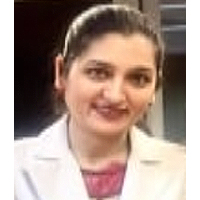High water intake in preventing the risk of Uric Acid Nephrolithiasis: A systematic review and meta-analysis
Published on: 12th July, 2019
OCLC Number/Unique Identifier: 8199212116
Background: Hyperuricosuria, persistently low urinary pH, and low urinary volume are the main risk factors of uric acid nephrolithiasis. Epidemiologic studies suggest that high water intake is protective against the occurrence of symptomatic kidney stone events of all types. The objective of this systematic review and meta-analysis were to evaluate the effectiveness of increased water intake to prevent symptomatic uric acid kidney stone events.
Methods: Seventeen studies were identified for the meta-analysis. Analysis of Q and I2% statistics revealed that a high heterogeneity in 16 studies, thus, random effects model was used. Protective associations were identified for high water intake individuals (SMD=0.52 L; 95% CI: 0.19, 0.84; p=0.002); a significantly decreased relative super saturation of uric acid versus controls (SMD=-1.15; 95% CI: -2.00, -0.30; p=0.008). Risk factors including urinary uric acid excretion and pH were not significantly related to high water intake (SMD=7.32mg/d, 95% CI: -52.27, 66.91; p=0.81), (SMD=0.14; 95% CI: -0.02, 0.31; p=0.09), respectively. Further subgroup analyses revealed that urinary uric acid excretion was significantly decreased in healthy individuals (SMD=-36.23 mg/d, 95% CI: -65.14, -7.31; p=0.001) compared to stone formers (SMD=27.41 mg/d, 95% CI: -33.18, 88.01; p=0.38); urinary uric acid excretion was significantly decreased in routine water intake groups (SMD=-61.49 mg/d, 95% CI: -120.74, 12.24; p=0.04) compared to mineral water intake groups (SMD=44.50 mg/d, 95% CI: -18.30, 107.29; p=0.16); urinary pH was significantly higher in mineral water groups (SMD=0.13, 95% CI: 0.01, 0.46; p=0.04) compared to regular water groups (SMD=-0.00, 95% CI: -0.13, 0.13; p=0.98).
Results: A total of 129 patients had 150 internal jugular catheter insertions. The mean age was 51.4±15.2 years with male to female ratio of 1.5:1. All the patients had chronic kidney disease; about 80% had tunneled IJC and 96.9% of the catheters were inserted in the right internal jugular vein. Immediate complications were recorded in 10% and late complications in 34.9% of the procedures. The immediate complications were kinking of guide wire (2%), arterial puncture (1.3%) and difficulty in locating the internal jugular vein (1.3%) or tunneling (1.3%). The late complications were infection (12.8%), poor blood flow (9.2%), bleeding (5.5%) and spontaneous removal of the catheter (5.5%). There was no statistical significant difference in both immediate and late complication with age and sex.
Conclusion: This meta-analysis identified evidence that urinary uric acid excretion, volume, pH and relative supersaturation of uric acid can be altered with high water intake intervention, reducing the risk of uric acid kidney stones.
To Examine the Effects of Risk Factors Associated with Kidney Stones in Determining the Disease by Considering their Combinations
Published on: 28th November, 2023
Aim: Kidney stone disease, which can affect people of all ages and whose incidence increases day by day, is becoming a public health problem due to treatment costs. This study aims to determine how factors related to kidney stones affect the diagnosis of the disease when taken together, rather than determining their relationship with the disease one by one.Materials and methods: An open-access dataset containing kidney stone status and associated factors was used in the study. Mann Whitney U test and independent sample t-test were used in data analysis. Logistic regression was performed with the backward variable selection method to determine the factors associated with kidney stones. ROC analysis was used to determine the power of the variables that were significant as a result of logistic regression analysis, individually and together, in discriminating kidney stones.Results: According to the results of logistic regression analysis, gravity, cond, and urea calc variables were found to be associated with kidney stones. With ROC analysis, it can be said that urea, calc, and gravity variables with AUC values above 0.60 can distinguish kidney stones. When the combinations of these variables are examined, the AUC values of the binary combinations are between 0.734 and 0.759, while the AUC value obtained for the triple combination is 0.831.Conclusion: According to the results obtained from the article, it can be said that while the factors associated with the disease and used in the diagnosis have little effect on the diagnosis of the disease alone based on the AUC values obtained from the ROC analysis, it can be said that considering them together increases the accuracy in diagnosis. Therefore, considering the factors thought to be associated with the disease together may be more appropriate in diagnosis and may give more accurate results.
Descriptive Study of the Urinary Tract Infections in Patients Admitted in the Cardiology Ward of Afghan Momand Medical Complex
Published on: 28th June, 2024
Urinary Tract Infection (UTI) is very common in our community most specifically in married females with numerous antecedent risk factors. The aim of the study was to find out about the current risk factors and clinical profile of urinary tract infections in patients admitted to the cardiology ward of Afghan Momand Medical Complex for various purposes.It was a cross-sectional descriptive hospital-based study including both male and female patients visiting the Afghan Momand Medical Complex from January 2022 to June 2022. Of all 960 patients, 202 (21%) patients had urinary tract infections with gender distribution as 69 (34.2%) males and 133 (65.8%) females. In fact, 33 (16.3%) patients with urinary tract infections were single while the rest 169 (83.7%) patients were married. In addition, regarding clinical profile, the following clinic was respectively more prevalent: Dysuria in 120 (59.4%) patients, flank pain in 73 (36.1%) patients, urine frequency in 67 (33.1%) patients, urgency in 36 (17.8%) patients, fever in 24 (11.8%) patients, and nausea and vomiting in 19 (9.4%) patients. Moreover, the following risk factors were respectively the most common ones: Diabetes mellitus 86 (42.5%), pregnancy 30 (14.9%), stones 15 (7.4%), 10 (4.9%) devices, 10 (4.9%) prostatic hyperplasia, and 4 (2%) anatomical anomalies.Urinary tract infection is a common disease in the admitted patients in Afghan Momand Medical Complex specifically being more common in females and early 20s of the age. In fact, diabetes, pregnancy, and kidney stones were the leading associated factors with UTI. Moreover, dysuria, bladder emptying irritative symptoms, and abdominal pain were the most prevalent clinical profile of the patients. Special attention should be paid to infectious diseases in cardiac patients since infection itself is a stress and a threat to such patients and authorities should design special measures to prevent UTI in the general population to avoid a sum of burden on the health system.
















